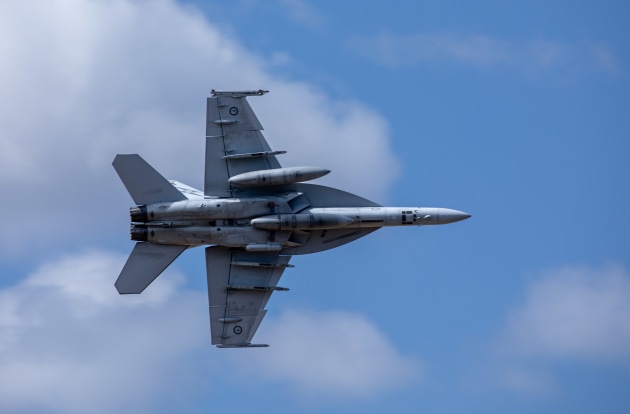The Royal Australian Air Force (RAAF) is advancing plans to equip its F/A-18F Super Hornets with the Hypersonic Attack Cruise Missile (HACM), developed by the United States Air Force. Beyond integration, the RAAF is set to play an essential role in testing this cutting-edge weapon.
In mid-2024, the U.S. Government Accountability Office (GAO) confirmed that Australia would host HACM tests, with the RAAF directly involved. However, Defence recently disclosed an additional detail: Australia is also integrating the HACM across its fleet of F/A-18F Super Hornets.
As stated by Defence in response to the GAO report, ‘Through the SCIFiRE agreement, the U.S. and Australia continue to collaborate on HACM design and development, including efforts to integrate HACM on RAAF F/A-18Fs and using Australian test infrastructure for flight tests.’

This integration aligns with the objectives in the 2024 Integrated Investment Plan (IIP), which outlines a vision for the RAAF’s F/A-18F and E/A-18G fleets to remain in service until 2040. Under this strategy, the F/A-18F aircraft will be fitted with an unspecified hypersonic weapon as part of an ongoing upgrade program. Though Defence hasn’t officially confirmed HACM as the chosen missile, the integration efforts and collaboration strongly indicate HACM will fulfil this role.
Australia’s participation in HACM testing remains somewhat undefined. The U.S. Air Force plans to acquire 13 HACM units for trials beginning October 2024. Although the exact timeline for testing in Australia is unknown, Defence highlighted that Australia’s weapons ranges, such as Woomera, provide flexible options for long-range tests essential to the SCIFiRE program.
The SCIFiRE initiative is a cooperative agreement launched in 2020 between Australia and the United States to drive the development and testing of hypersonic cruise missile prototypes. While initially positioned as a research endeavour, it is now clear that SCIFiRE directly supports the U.S. HACM program.
According to Defence, ‘The preliminary design developed by Raytheon under SCIFiRE is being operationalised under the Hypersonic Attack Cruise Missile (HACM) program.’
Under SCIFiRE, Australia and the U.S. enlisted Lockheed Martin, Boeing, and Raytheon to contribute initial HACM designs. After a rigorous evaluation, Raytheon’s design was chosen for U.S. Air Force deployment in September 2022. Since then, SCIFiRE has shifted towards a cooperative framework, facilitating Australia’s involvement in HACM development alongside the U.S. Air Force.
In a statement to U.S. Congress, Dr. James Weber, the Principal Director for Hypersonics within the Office of the Assistant Secretary of Defense for Critical Technologies, confirmed, ‘Under the SCIFiRE partnership with Australia that was established in 2021, HACM engaged three weapons manufacturers, executed three preliminary design reviews, and competitively down-selected to Raytheon in September 2022. This program recently conducted wind tunnel testing of the all-up round and static fire ground tests for its new rocket motor. In collaboration with Australia, the Air Force HACM program is on track to meet warfighter needs.’
In addition to HACM, other advanced weapons systems may eventually be integrated with Australia’s F/A-18Fs. During the 2024 Rim of the Pacific (RIMPAC) exercise, for instance, U.S. Navy F/A-18E/F Super Hornets were observed carrying air-launched SM-6 missiles, designated AIM-174Bs, which could also be considered for future deployment on Australian aircraft.
With these strategic upgrades, Australia’s fleet will not only be capable of cutting-edge hypersonic missile deployment but also aligned with advanced weaponry, ensuring continued relevance and strength in the years to come.


